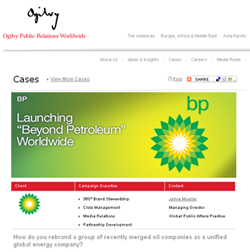By Summer 2007, the housing market was in trouble: falling prices, inventories rising and foreclosures rising.
Early Signs:
Although a housing bubble is difficult to predict, there were early signs starting in 2004. Perhaps economists should have noticed that Freddie Mac was financing risk-laden loans as an early indicator. Many economists and government leaders simply failed to pay attention to the warnings or ignored it altogether -- all this happening under President Bush's watch.
Bear in Bankruptcy
Then two Bear Sterns (Global investment bank/securities trading brokerage) hedge funds are forced into bankruptcy. They had invested in AAA-rated mortgage backed securities. The prices of these securities had declined steeply.
Ironically as these investor losses mounted starting in 2006, Bear Sterns increased their exposure, thus resulting in more heavier losses.
Saving Bear
In early 2008, the Federal Bank of NY provided an emergency loan to try to avert the company from collapsing.
In March 2008, the Fed tried hard to find a buyer for Bear. Prohibited from lending money to Bear, the Fed decided to lend money to JPMorgan, which, in turn, provided the funding to Bear.
FREDDING AND FANNIE in Conservatorship
Who to Blame
9/11 occurred early in President Bush's watch. Since then he experienced a major hurricane that nearly wiped out New Orleans and got the US involved in two major wars that we are losing, resulting in many casualties and over a thousand wounded.
Sadly, while the administration was focusing on the war, their attention was diverted from the economy.
Many people judge the president's legacy mainly by the economic performance during the term. For Bush, the economy lost ground resulting in lower median household income, higher unemployment and the number of Americans without health insurance spiking (4).
So GW Bush began his term with the worst attack on American soil since Pearl Harbor and is ending it with the worst financial crisis since the Great Depression -- what does that tell you.
Did the terrorists get want they wanted after all? Perhaps it wasn't just bricks and mortar and innocent people they were after -- they were targeting capitalism, and perhaps the previous administration had fallen for the bait.
Bush Wanted to Transfer Oversight of Fannie and Freddie to HUD. Barney Frank's Objection was Devastating
After the accounting scandals, this was a good idea. President Bush did not feel that Congress could do its job. But Rep Barney Franks, the ranking Democrat in the Financial Services Committee, strongly opposed it. This turned out to be a big mistake, because reining in Fannie and Freddie could have significantly alleviated the housing crisis.
Belligerent Fuld
On Sept 2008, Lehman filed for Chapter 11 bankruptcy protection after many of its clients departed due to drastic stock losses. This filing was billed as the largest bankruptcy in U.S. history (1).
They had to sell Lehman, but CEO Richard Fuld (2) was brazen and he wanted a higher price. The last straw -- he was in Korea trying to work a deal. But Fuld wouldn't budge on the price.
On Oct 6, 2008 Fuld testified before the US House Commitee on Oversight and Government Reform on Capitol Hill regarding the bankruptcy of Lehman.
CNBC reported that Fuld was attacked and "knocked out cold" at the Lehman gym due to their declaration of bankruptcy. Fuld representatives denied this news report.
Nobody Wanted to Buy Lehman
Bank of American and Barclays were candidates but estimated that Lehman had approximately $ 30 million of bad loans on the books.Sadly, the government was not willing to guarantee a portion of it.
Regret letting Lehman Go
Secretary Paulson and other conservatives did not realize how interrelated Lehman was -- even more so than Bear. So the fall of Lehman deeply afflected the global markets, global credit and freezing the markets.
Why is AIG Affected?
If this is a housing/mortgage crisis, then why is an insurance company that specializes in home and life insurance affected -- there is no major natural disaster -- that is exactly the same question that I chewed on.
American International Group (AIG) takes a huge hit because they had put tons of money betting that firms like Lehman would never go bankrupt.
AIG experienced a liquidity crisis when its credit ratings were downgraded below "AA" in Sept 2008.
But the US government would not let AIG fail. Letting AIG fail would not only affect the U.S. economy, it would be disastrous to the world economy.
Bailout -- Famous quote: "We May not have an Economy Monday."
The emergency plan asks for $700 billion to buy up toxic mortgage sercurities from the banks without an oversight mechanism from Congress.
Both Lehman Brothers and Bear Sterns were major players in the sub-prime mortage business. They loaned money, in the form of credit, to non-bank lenders.
Lehman brothers knew what they were getting into, and they should have realized the risk and possiblity for disaster.
AIG Backlash
in March 09, AIG executives faced public outlash for providing retention benefits of $165 million after the government bailout of $182.5 billion was approved (3).
Final Analysis
The mortgage crisis which started in 2007 was spurred by a sharp rise in mortgage delinquencies and foreclosures in the US.
Some may argue that the American public should have been on its toes and applied some pressure on these companies to stop such risky investment. But lets face it, middle class America was able to purchase homes that they would have never dreamed of buying in the past, and the average person would assume that these large banking and investment firms would have been reasonable and not have invested more money than they could risk in investments that were very risky.The books should have all balanced out. Liabilities should never have been greater than assets.
Paulson let Lehman fail:
References:
(1) "Lehman folds with Record $613 Billion Debt", Marketwatch Sept 15, 2008





